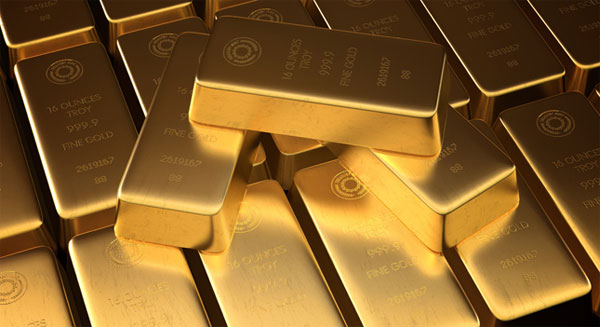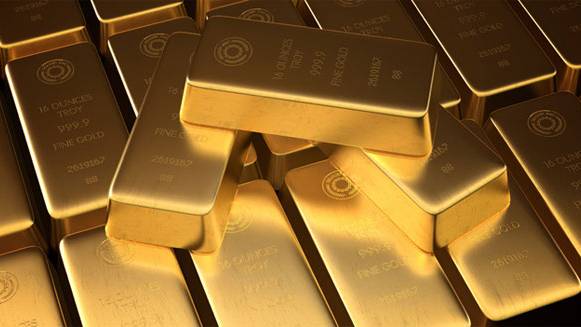All That Glitters
Source: pbs.org

For thousands of years, gold has played civilization's ultimate Siren, luring explorers, sparking wars and building empires. So what is our enduring fascination with gold?
The romance and allure of this glittering precious metal stretches across the centuries. People move mountains to extract it; they fight and die and enslave one another to possess it, and men and women from all cultures adorn their bodies with gold, make art with it, use it in medicine and industry, and treat it as a sacred object.
Gold has been found in caves inhabited by humans as early as 40,000B.C.E. it adorned temples and priests in Sumeria; and by 5000B.C.E., it was being refined by the Egyptians. The first large-scale issue of gold coins as currency was under King Croesus (560B.C.E.) in the Kingdom of Lydia, now western Turkey. Over the centuries, goldsmiths and scientists found gold to be a highly versatile and practical metal. It is so malleable that a single ounce can be hammered into a wafer stretching more than 100 square feet; in addition, it doesn't tarnish and is largely nonreactive.
Gold's physical beauty, adaptability and rarity has made it one of the most coveted commodities on earth. And whether in a towering Byzantine cross, a humble wedding ring, a tooth, a coin or an astronaut's face shield, gold endures.
"Almost all of the gold ever mined is still around," writes Peter L. Bernstein in his book The Power of Gold. Some of it sits in museums adorning the statues of ancient gods; some "rests quietly in shipwrecks at the bottom of the seas." Yet remarkably, Bernstein estimates, if all the gold ever mined were brought together in one place and formed into one solid cube, it would fit on board a single oil tanker.
Its relative scarcity keeps gold central to the workings of the world's economy. As master of the mint in England in 1717, Sir Isaac Newton devised the gold standard and set a price for gold that remained virtually unchanged for 200 years. In economic terms, the gold standard allowed a country to peg the value of its currency to a fixed price for gold. Holders of bank notes could redeem them for gold, and countries backed their paper currency with large reserves of bullion. By the end of the 19th century, many countries had officially adopted some form of the gold standard.
Gold prices in the United States remained fixed until 1971, when the economy hit a crisis. Given the inflation caused by rising oil prices and the escalating costs of the Vietnam War, President Richard Nixon determined that gold was undervalued. In taking the country off the gold standard and allowing gold to float freely against the dollar, he was, in essence, devaluing the American currency. Gold prices quickly sailed upward. By 1980, gold had hit an all-time high of $850 an ounce. Subsequently, the price dropped considerably, but it is once again on the rise, approaching $500 an ounce in 2005.
Andrew K. Rose, a professor of international business at the University of California at Berkeley's Haas School of Business, feels the change is for the better. Gold is "an irrelevant vestige of the past," he says, with no real economic utility. Since the dollar was taken off the gold standard, says Rose, "gold has had no formal role in the [U.S.] economy." He even suggests that if the gold bars held by the central banks turned out to be made of Styrofoam, "nothing would change."
So What Are All Those Gold Bars For?
The United States and other countries continue to value gold because it's the currency of international trade, explains George Milling-Stanley of the World Gold Council, a group financed by gold mining companies to increase gold consumption. "They own reserves in case they get in trouble. To finance any short-term problems, they sometimes use their reserves as collateral because it gives them credit, just like some people might use their house," he says. "The value of this asset, unlike any other currency, cannot be influenced by any single country or government. It's a currency without a country." Miller-Stanley says gold is a useful "long-term hedge against inflation" for countries just as it is for individuals.
World events obviously affect gold markets: The price rises in inverse proportion to the dollar in times of economic and political uncertainty, then settles back down when circumstances calm down. But the central banks also play a major role, buying and selling gold at regular intervals and holding much of the world's bullion stock. In 1999, amid concern over fallout if governments decided to sell their extensive reserves simultaneously, the European central banks agreed to limit their annual sales of gold to 400 tons so that the market could predictably factor that into the price. The central banks renewed the agreement in 2004 for another five years, although they raised the limit to 500 tons.
Many analysts believe that the price of gold could soar again, given the ballooning U.S. budget and trade deficits. In July 2005, Stock Resource, an Australian financial research and investment firm, predicted that the price of the precious metal could once again reach $850 an ounce because of the debt-ridden American economy. Bob Bishop, publisher of the industry newsletter Gold Mining Stock Report, expects the per-ounce price of gold to reach the four-digit range within a decade because of what he describes as "a perfect storm" of conditions. The gold exploration cycle of the 1990s is coming to an end, he points out, and new discoveries are rare. At the same time, demand for gold is sharply on the rise in the growing economies of China and India.
But gold analyst Andy Smith, who acknowledges that gold has universal appeal during troubled times, tells FRONTLINE/World that the attachment to the metal "is almost cultlike." Smith says that since 1911, nearly every commodity has beaten gold in performance. "If you're buying gold because you think there's a real system problem and the dollar's not going to be accepted as the world's currency and the U.S. is really going to have terrible economic problems in the future and this might cause social unrest," Smith says, "well, buy a dog and a big gun -- because you should buy a metal that fires bullets and not one that shines in the dark."
Given gold's prestige, though, he doesn't expect investors' enthusiasm for it to collapse anytime soon. In difficult times, many investors tend to look for safety in gold. And buying the precious metal represents more than an investment strategy: It expresses a deep human attachment to gold that has persisted since ancient times.
Source: pbs.org




















